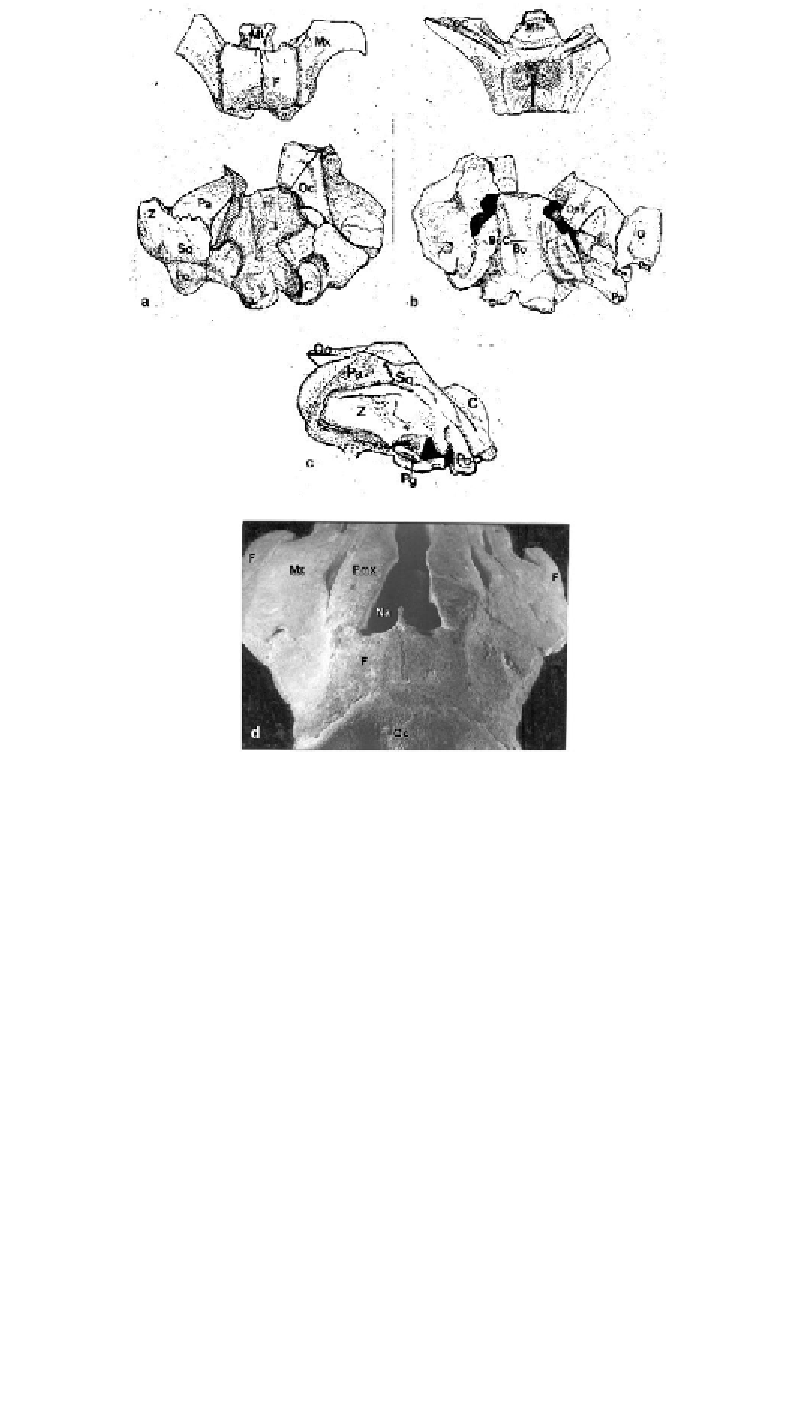Biology Reference
In-Depth Information
Figure 1. Holotype skull of
Pronia
patagonica
(a-c) and a skull of
Prosqualodon
australis
(d). a. Dorsal
view, b. Ventral view, c. Lateral view, d. Dorsal view of the posterior facial surface and vertex. Bo.
Basioccipital, Boc. Basioccipital crest, C. Occipital condyle, F. Frontal, G. Glenoid fossa, Mt.
Mesethmoid, Mx. Maxilla, Na. Narial passage, Oc. Occipital, OC. Optic channel, Och., Olfactory
chambers, Os. Orbitosphenoid, Pa. Parietal, Pg. postglenoid process, Pmx. Premaxilla, Po. Paraoccipital
process, Sq. Squamosal, Z. Zygomatic process
In fact, the holotype of
Proinia
lacks all iniid diagnostic features and most of its features
are quite similar to those of
Prosqualodon australis
. One of the most important similarities
with
Prosqualodon
lies precisely in the squared and smooth frontals of the cranial vertex.
Furthermore, in the skull of
Proinia
this region is relatively larger than in
Prosqualodon
;
this
could be due to its young age. As in
Prosqualodon
the free margin of the ascending processes
of the maxilla are concave and with strong forward divergence in dorsal view. Similarly, the
shape of the paraoccipital process is subtriangular, with a broad origin and a blunt end. The
zygomatic process has a similar shape, a smooth to slightly convex outer-lateral face, a slight
and rounded crest on the dorsal and posterior borders, broad surfaces for mandibular
articulation, and no root. The squamosal is narrow and posteriorly directed. The squamosal
and the posterior part of the parietal have a very convex surface without squamosal fossae.

Search WWH ::

Custom Search